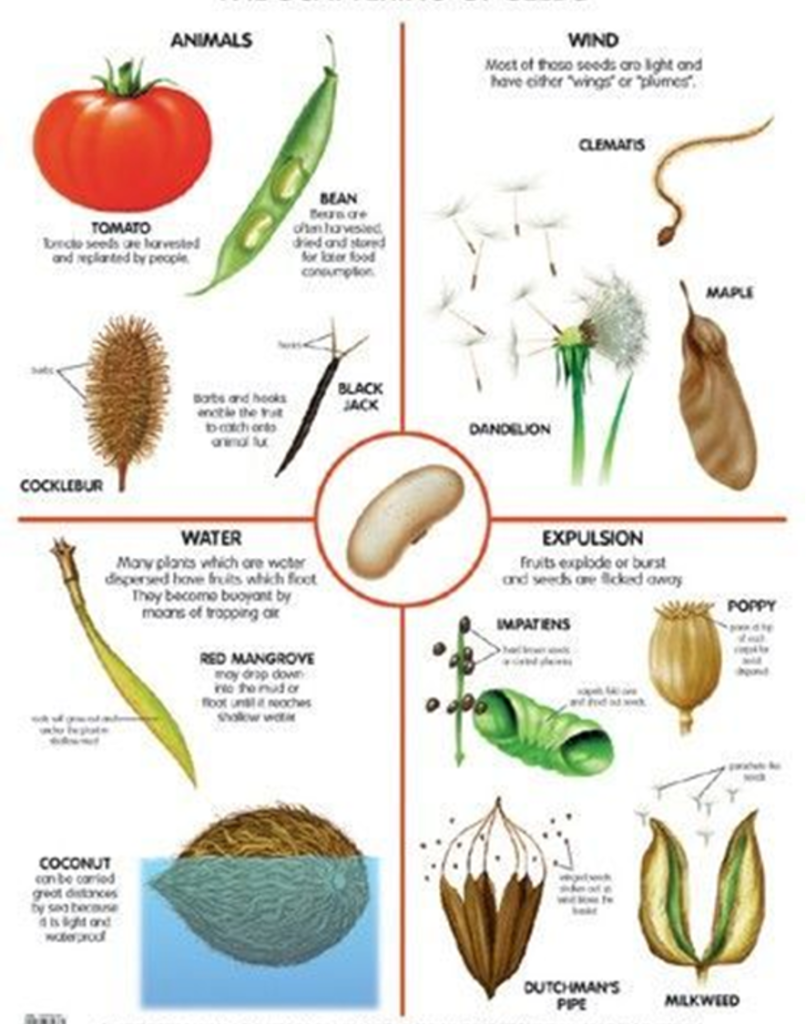57 Fruits, Seeds and Dispersal
The fruits’ purpose is for reproduction of a new plant.
Part of a plant’s survival is in its ability to compete with other plants for nutrition, water, soil, etc, therefore they have varying dispersal methods.

Flowering and fruiting plants have unique adaptations to promote dispersal:
- Burrs and awns become entangled in animal fur and are transported great distances from the parent plant.
- Winged and tufted fruits and seeds are carried away by the wind.
- Fruits and seeds with thick exocarps (husks) are able to survive long periods in salt water.
- Edible fruits generally have their seeds expelled from the body of their diner at some distance from the parent plant.
- Dehiscent fruits often discharge their seeds explosively, scattering them over a wide area
- Many fruits are buoyant, and will float in fresh water creeks and rivers until washed ashore.
- Viviparous plants (mainly mangroves) start the seed germination process while the fruit is still attached to the tree.
Methods of seed dispersal
Watch the following video which outlines the four main methods of seed dispersal:

Seed dispersal by explosion
Activity
Go for a walk on campus and record what seed dispersal methods you observe.
- Water
- Expulsion
- Wind
- Animal
